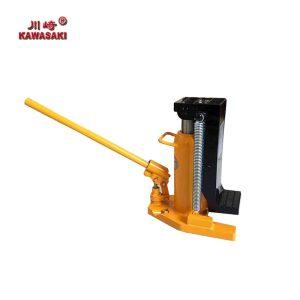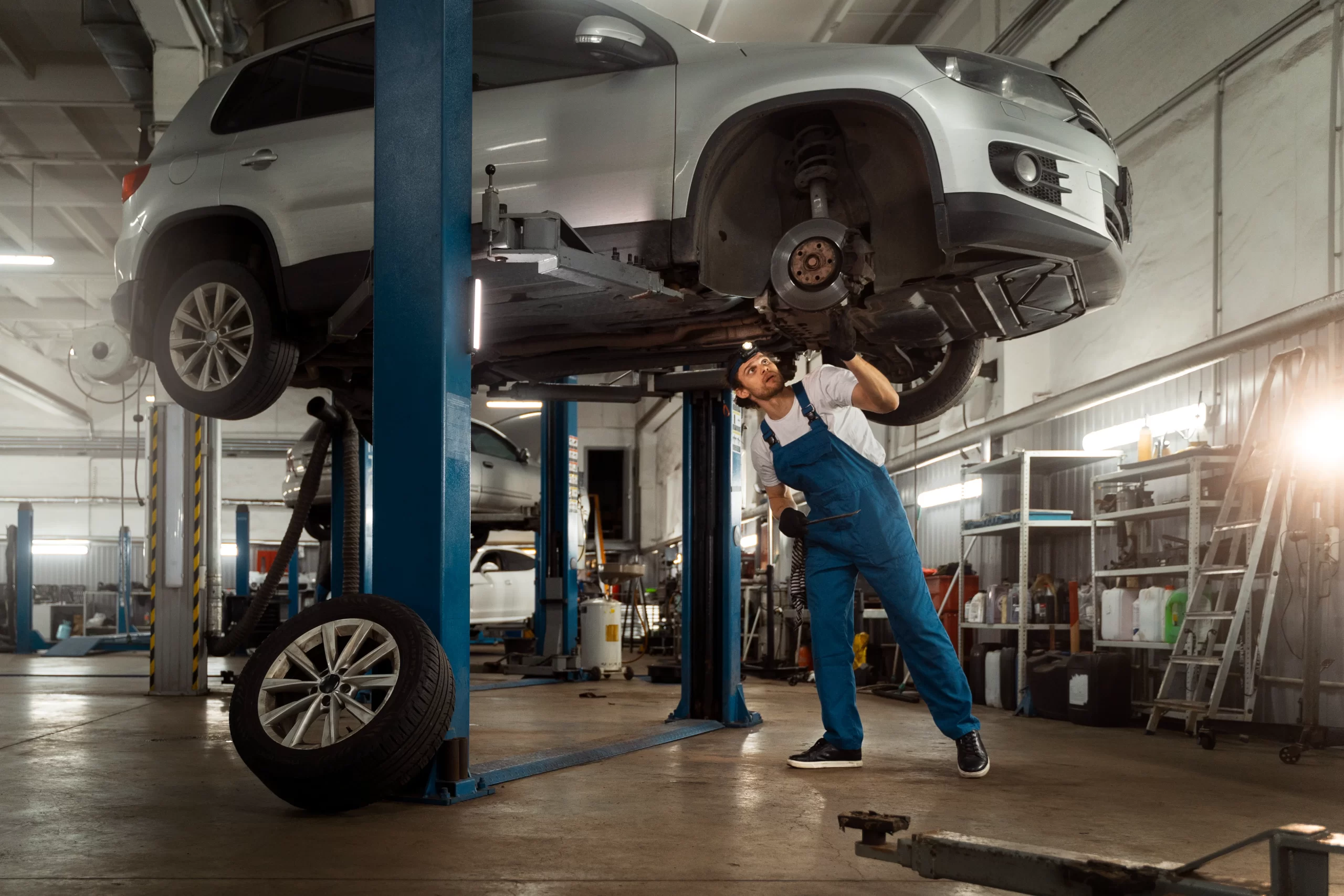Introduction
Jacks are fundamental mechanical devices used to lift, push, pull, or hold heavy loads with the application of relatively little force. They have been indispensable tools in construction, transportation, manufacturing, automotive repair, and industrial operations for centuries. While their basic function is straightforward—lifting or supporting weight—their design variations, power sources, and application areas are remarkably diverse. This essay explores the different types of jacks, their operating principles, and the scope of their applications across industries.
1. Classification of Jacks
Jacks can be broadly categorized based on their mechanism of operation and intended use. The primary classifications are:
-
Mechanical Jacks – Operated manually through levers, screws, or gears.
-
Hydraulic Jacks – Utilize hydraulic fluid pressure to amplify force.
-
Pneumatic Jacks – Powered by compressed air for faster and higher-capacity lifting.
-
Electric Jacks – Use an electric motor to automate lifting.
-
Specialized Jacks – Designed for unique industrial or maintenance applications.
Each type differs in lifting capacity, portability, cost, and suitability for specific scenarios.
2. Mechanical Jacks
Mechanical jacks are the oldest and simplest type, typically operated by hand. They rely on leverage, screw threads, or ratchet mechanisms to lift loads.
2.1 Screw Jack
-
Description: Works by turning a threaded screw through a nut to raise or lower the load.
-
Capacity: Ranges from a few tons up to several hundred tons.
-
Applications:
-
Bridge construction and heavy machinery positioning.
-
Rail maintenance for lifting railway coaches.
-
Automobile lifting, particularly older vehicles.
-
2.2 Scissor Jack
-
Description: Uses a diamond-shaped linkage that expands when a screw is rotated. Compact and portable.
-
Capacity: Typically 1–3 tons.
-
Applications:
-
Standard equipment in car trunks for tire replacement.
-
Small-scale lifting in workshops.
-
2.3 Ratchet Jack
-
Description: Employs a ratcheting lever that incrementally lifts the load.
-
Applications:
-
Rail track adjustments.
-
Lifting farm machinery and medium equipment.
-
Advantages of Mechanical Jacks:
-
Simple design, easy to use.
-
No dependence on fluid or electrical power.
-
Reliable for steady, controlled lifts.
Limitations:
-
Slower operation.
-
Requires significant manual effort.
-
Lower lifting capacity compared to hydraulic jacks.
3. Hydraulic Jacks
Hydraulic jacks use Pascal’s Law: pressure applied to a confined fluid is transmitted equally in all directions. This principle allows a small force applied at one point to generate a much larger force at another point.
3.1 Bottle Jack
-
Description: Cylindrical design resembling a bottle; compact and powerful.
-
Capacity: From 2 tons to 50+ tons.
-
Applications:
-
Automotive repair shops for lifting trucks, buses, and cars.
-
Construction sites for structural lifting.
-
3.2 Floor Jack (Trolley Jack)
-
Description: Mounted on wheels with a horizontal piston; easy to maneuver.
-
Applications:
-
Vehicle maintenance in garages.
-
Situations requiring frequent repositioning.
-
3.3 Toe Jack
-
Description: Designed with a low lifting toe for raising loads with minimal ground clearance.
-
Applications:
-
Heavy machinery relocation.
-
Industrial plant maintenance.
-
3.4 Hydraulic House Jack
-
Description: Large-capacity jacks used to lift entire buildings for foundation repairs.
-
Applications:
-
House moving.
-
Structural foundation work.
-
Advantages of Hydraulic Jacks:
-
High lifting capacity.
-
Smooth, efficient lifting with minimal effort.
-
Versatility in industrial and automotive settings.
Limitations:
-
Heavier and bulkier than mechanical jacks.
-
Require maintenance of hydraulic fluid seals.
-
Slower reset time.
4. Pneumatic Jacks
Pneumatic jacks rely on compressed air, either from an onboard compressor or external source, to lift loads.
4.1 Airbag Jack
-
Description: Inflatable air bladder that raises the load as it fills with air.
-
Applications:
-
Vehicle recovery in off-road conditions.
-
Quick lifting of cars or trucks in workshops.
-
4.2 Pneumatic-Hydraulic Jack
-
Description: Combination of air pressure and hydraulic fluid, offering high capacity with ease of operation.
-
Applications:
-
Truck service stations.
-
Industrial plants requiring frequent, high-capacity lifts.
-
Advantages of Pneumatic Jacks:
-
Fast operation.
-
Minimal physical effort required.
-
High lifting capacity.
Limitations:
-
Dependence on air compressors.
-
More expensive than manual jacks.
-
Less portable for remote locations.
5. Electric Jacks
Electric jacks integrate electric motors to perform lifting automatically, reducing manual labor.
5.1 Electric Scissor Jack
-
Description: Works similarly to manual scissor jacks but powered by a car’s cigarette lighter or external battery.
-
Applications:
-
Roadside tire replacement.
-
Emergency roadside kits.
-
5.2 Electric Hydraulic Jack
-
Description: Combines hydraulic lifting with electric control.
-
Applications:
-
Automotive service centers.
-
Workshops requiring frequent lifting.
-
Advantages of Electric Jacks:
-
Quick and convenient operation.
-
Minimal operator effort.
-
Ideal for roadside emergencies.
Limitations:
-
Dependence on electrical power.
-
Higher cost.
-
Potential electrical hazards in wet environments.
6. Specialized Jacks
Some industries require specialized jack designs to meet unique demands.
6.1 Railway Jacks
-
Used for lifting locomotives, carriages, and tracks.
-
High load capacity with precise adjustment.
6.2 Track Jacks
-
Employed in railroad maintenance to align and level tracks.
6.3 Inflatable Jacks (Rescue Jacks)
-
Heavy-duty airbags used in emergency rescue operations.
-
Applications: Lifting collapsed structures, earthquake rescue.
6.4 Screw Bottle Jacks for Stages and Platforms
-
Used in theaters or concerts for raising platforms and stages.
6.5 Marine Jacks
-
Specialized for shipbuilding and dock maintenance.
7. Application Scope of Jacks
The scope of jack applications is vast, extending across multiple sectors:
7.1 Automotive Industry
-
Vehicle lifting for repairs and tire changes.
-
Heavy truck and bus maintenance with hydraulic or pneumatic jacks.
-
Portable scissor and electric jacks for emergency roadside use.
7.2 Construction and Civil Engineering
-
House lifting for foundation repair.
-
Lifting steel beams and bridge components.
-
Positioning precast concrete sections.
7.3 Industrial and Manufacturing
-
Machinery installation and maintenance.
-
Relocation of heavy equipment with toe jacks.
-
Assembly line lifting operations.
7.4 Railways
-
Track leveling and rail coach lifting.
-
Maintenance of locomotives and carriages.
7.5 Emergency and Rescue
-
Inflatable rescue jacks for earthquakes, landslides, and collapsed structures.
-
Firefighting operations requiring rapid lifting.
7.6 Marine Applications
-
Shipyard lifting of components.
-
Maintenance of dock facilities.
7.7 Household Use
-
Compact scissor jacks for home garages.
-
Small hydraulic jacks for personal repair work.
8. Factors Affecting Jack Selection
When choosing a jack, several considerations influence suitability:
-
Load Capacity – Must match or exceed the weight of the object.
-
Lifting Height – Determines how far the object needs to be raised.
-
Portability – Important for roadside or rescue operations.
-
Power Source – Manual, hydraulic, pneumatic, or electric based on availability.
-
Frequency of Use – Industrial settings require durable, high-capacity jacks.
-
Safety Features – Overload protection, stability, and locking mechanisms.
9. Safety Considerations in Jack Use
While jacks are powerful tools, improper use can lead to accidents. Key safety guidelines include:
-
Always place jacks on firm, level surfaces.
-
Never exceed rated load capacity.
-
Use jack stands for vehicle support; never rely solely on a jack.
-
Regularly inspect hydraulic seals and mechanical threads.
-
Train operators on proper handling in industrial settings.
Conclusion
Jacks, though often overlooked, are indispensable tools across industries. From simple scissor jacks in car trunks to high-capacity hydraulic systems in construction, their versatility is unmatched. The choice of jack depends on factors like capacity, portability, and application environment. As technology evolves, modern jacks are becoming more automated, efficient, and specialized, enabling safer and more efficient lifting operations. Whether in everyday car repair or large-scale industrial maintenance, jacks remain essential devices bridging human effort and heavy load manipulation.


